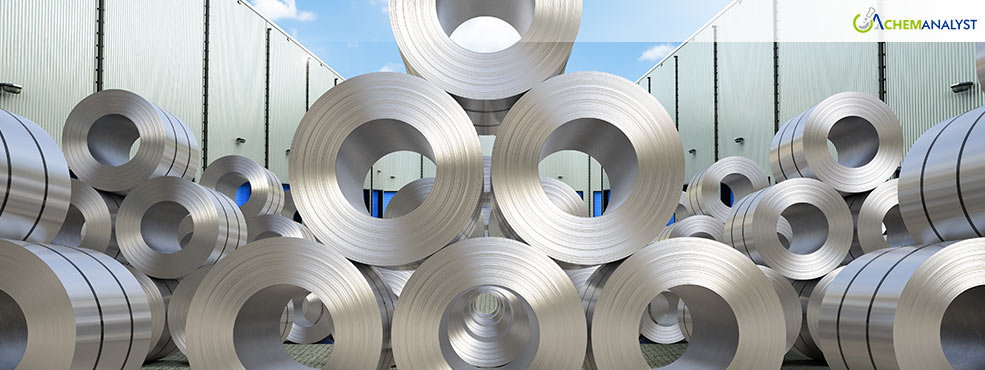Welcome To ChemAnalyst

Global Stainless-Steel Hot Rolled Coil (SSHRC) markets faced widespread price declines due to supply-demand imbalances and trade disruptions. US markets struggled with anti-dumping duties and policy uncertainty, while Chinese production cuts failed to offset weak seasonal demand. European markets absorbed redirected Asian volumes at heavily discounted prices, creating intense competitive pressure.
During June 2025, the world SSHRC market saw price declines widely, with prices down 1.5% in the US and China down 0.9%, primarily owing to supply-demand imbalances and major trade disruptions in some countries. The beaten-down SSHRC markets worldwide faced additional non-attractive pricing, anti-dumping duties on stainless-steel imports, re-directed trade flows from new supply commitments, along with shutdowns of production from the COVID pandemic that still has countries with capacity reductions owing to highly snatched supply-chain disrupted demand.
Key Takeaways:
The US market for SSHRC saw a price decrease of 1.5% as anti-dumping investigations and shifts in trade policy adjusted market activity, pricing, and buyer behaviour. Although the Commerce Department's preliminary determination against Taiwanese stainless-steel exports had dumping margins of 21.10% that were uncertain and impacted pricing, overall imports of steel rebounded 20% in May. As the general trade environment for SSHRC continued to be difficult for stable (and increasing) prices, SSHRC imports continued to demonstrate ongoing vulnerabilities that needed to be addressed and acknowledged.
Chinese SSHRC markets dropped 0.9% as entered the typical consumption off-season with ongoing supply-demand imbalances due to historical levels of production. Although the industry has implemented consecutive production cuts that total 7.09% month-over-month the current production levels are still high, especially for the 300-series where the sharpest decline of 6.94% MoM was recorded, and relative stability of the 200-series at -3.89%. SSHRC pricing is at multi-year lows and has created substantial cost-price inversions for mills.
European markets faced extraordinary disruption as SSHRC imports increased over 1,000% due to US tariff redirections. The European Commission's trade monitoring report found alarming drops in import prices, almost 90%, as Chinese and other Asian suppliers redirected volumes to European markets and created a trade diversion effect that put unprecedented competitive pressure on domestic SSHRC pricing.
The global SSHRC market faced multiple headwinds from trade policy changes and structural oversupply. The U.S. anti-dumping actions against Taiwan fractured the market; certain EU type markets absorbed these redirected Asian volumes at steep discounts. Chinese mills faced the trifecta of weak demand, heavy inventory and operational losses.
Raw material dynamics added complexity, with ferrochrome prices remaining firm due to overseas smelter shutdowns and reduced chrome imports, while declining nickel prices provided limited relief. This cost structure imbalance further pressured SSHRC mill margins globally.
Downstream demand remained cautious across all regions, with end-users adopting minimal procurement strategies based on immediate needs. The "rush to buy amid price rise, hold back amid price decline" mentality dominated purchasing decisions, creating persistent transaction sluggishness.
SSHRC market recovery requires fundamental demand improvement and effective supply discipline. Chinese production cuts must accelerate to address supply-demand imbalances, while trade policy clarity is essential for stable pricing. The traditional off-season typically extends through Q3, limiting near-term demand recovery prospects.
According to ChemAnalyst, The SSHRC market outlook will remain difficult until Q3 2025 - as the Chinese markets will need more aggressive production cuts to regain pricing stability, the US markets will need the uncertainty around trade policy resolved, and European markets will have to absorb redirected trade flows before moving toward stability - recovery of prices could take 3-4 more quarters as downstream demand incrementally projects stronger and supply-demand fundamentals align themselves.
We use cookies to deliver the best possible experience on our website. To learn more, visit our Privacy Policy. By continuing to use this site or by closing this box, you consent to our use of cookies. More info.
